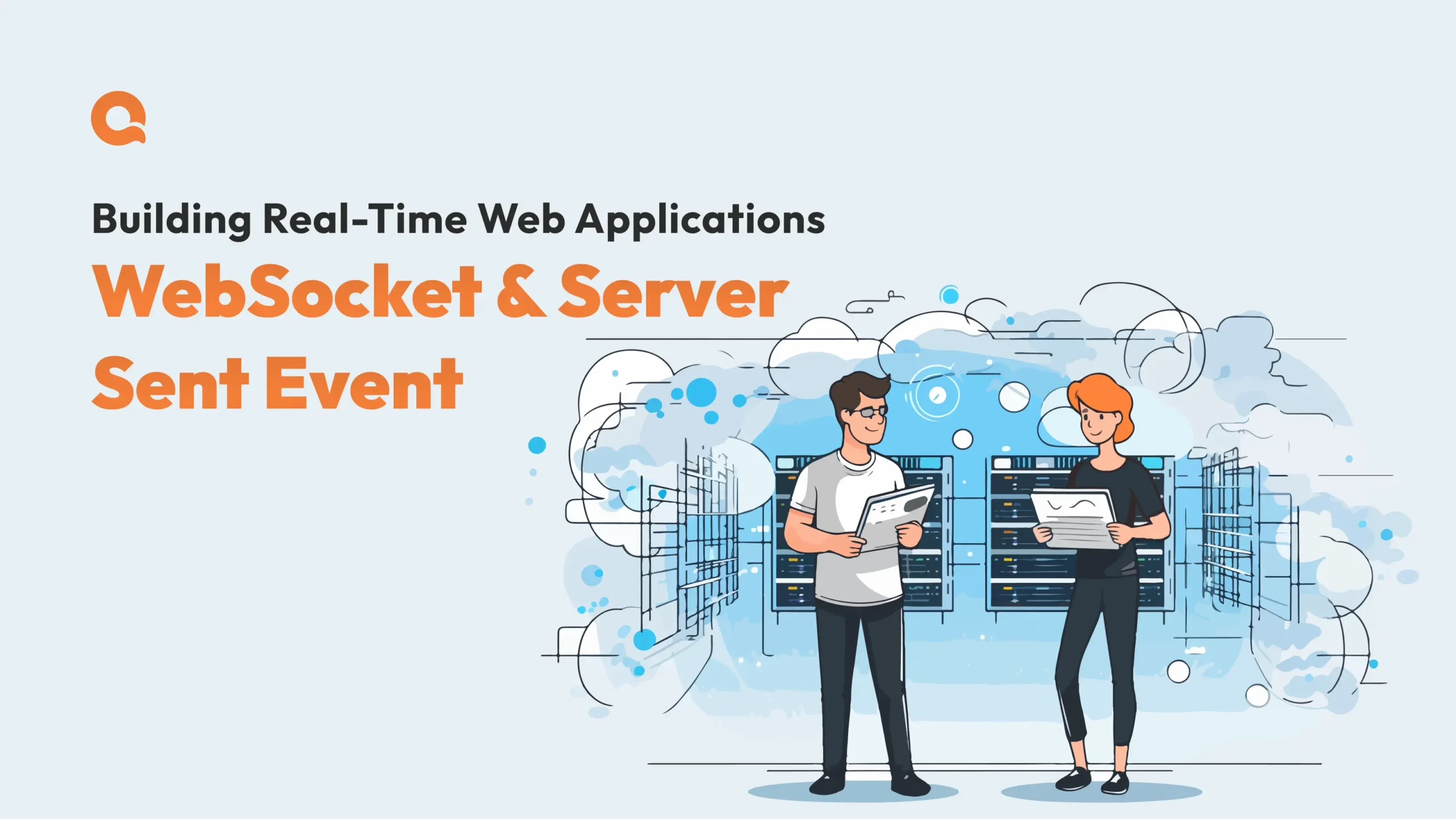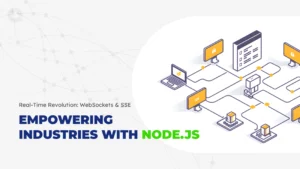
Introduction
A. The evolution of web applications
The Landscape of Web applications has evolved dramatically over the years. From static HTML pages to dynamic, interactive applications, developers have been continuously pushing the boundaries of what is possible on the web. Real-time web applications have emerged as a game-changer, offering users instantaneous interactions and seamless data updates without the need for manual refreshes.
B. The need for real-time interactions
In today’s fast-paced digital world, users expect real-time interactions and updates from web applications. Whether it’s live chat, real-time collaborative editing, or multiplayer gaming, real-time communication is becoming a standard requirement. To fulfill these expectations, developers need efficient and reliable methods of achieving real-time capabilities in their applications.
C. Overview of WebSocket and Server-Sent Events (SSE)
WebSocket and Server-Sent Events (SSE) are two prominent technologies that enable real-time communication between web clients and servers. They allow developers to create responsive and interactive web applications that can deliver data instantly, making them indispensable for modern web development.
Understanding Real-Time Communication
A. Defining real-time web applications
Real-time web applications are those that deliver data and updates to clients as soon as they become available on the server, without any significant delay. This immediacy is essential for applications like live chats, stock market tickers, or collaborative tools, where timely information is critical.
B. Importance of real-time communication in modern web development
Real-time communication not only enhances user experience but also opens up new possibilities for web applications. It fosters collaboration, engagement, and interactivity, making applications feel more responsive and immersive.
C. Real-world use cases for real-time web applications
Real-time web applications find applications in a wide range of industries and domains. From customer support platforms with live chat to real-time multiplayer gaming, stock market tracking, and collaborative project management tools, real-time communication enriches various user experiences.
Exploring WebSocket
A. What are WebSocket?
WebSocket are a bi-directional communication protocol that allows full-duplex communication between a web browser and a server. Unlike traditional HTTP, which follows a request-response model, WebSocket establish a persistent connection that facilitates real-time data exchange.
- WebSocket protocol and how it works
WebSocket operates over a single TCP connection, maintaining a lightweight and efficient communication channel. The connection begins with a WebSocket handshake initiated by the client, and once established, both the server and client can send and receive data as needed. Explore the official WebSocket API documentation for more technical insights.
- Key advantages of WebSocket over traditional HTTP
WebSocket offer several advantages over traditional HTTP for real-time communication. These include reduced latency, minimized overhead due to no repeated handshakes, and the ability to send data as soon as it becomes available, without the need for continuous polling.
B. Implementation of WebSocket in web applications
To implement WebSocket in a web application, developers need to set up a WebSocket server capable of handling WebSocket connections and messages.
- Setting up a WebSocket server
Developers can use popular WebSocket libraries and frameworks, such as Socket.IO for Node.js, to set up a WebSocket server. These libraries handle the underlying complexities, allowing developers to focus on building real-time functionality. Discover how to implement a WebSocket server using the Socket.IO library.
- Establishing a WebSocket connection
In the web browser, developers can create a WebSocket instance and initiate a connection to the WebSocket server. Once the connection is established, developers can send and receive data using WebSocket events.
C. Real-time bi-directional communication using WebSocket
WebSocket facilitate real-time bi-directional communication between the client and server.
- Sending and receiving data in real-time
Developers can send messages from the server to the client or vice versa in real-time. This enables real-time updates, notifications, and chat messages to be delivered instantaneously.
- WebSocket events and message handling
WebSocket events, such as “message”, “open”, and “close” provide developers with hooks to handle different stages of the WebSocket connection and respond to messages received from the server or the client.

A Deep Dive into Server-Sent Events (SSE)
A. What are Server-Sent Events?
Server-Sent Events (SSE) is another mechanism for real-time communication between web clients and servers. It allows servers to push data to clients over a single HTTP connection, making it suitable for scenarios that require one-way communication.
- Understanding the SSE standard and its purpose
SSE is built on top of HTTP and follows a simple and well-defined protocol. It allows servers to send a stream of data to clients, keeping the connection open for as long as necessary.
- Contrasting SSE with WebSocket – use cases and differences
While SSE and WebSocket both enable real-time communication, SSE is more suitable for scenarios where the server needs to push data to clients unidirectionally, such as in live updates or event streaming. WebSocket, on the other hand, are more versatile and support full-duplex communication.
B. Implementing Server-Sent Events in web applications
To implement SSE in a web application, developers need to set up an SSE server and establish a persistent connection with clients.
- Setting up an SSE server
Developers can create an SSE endpoint on the server side, which sends a continuous stream of data to the connected clients. The HTTP connection remains open, allowing the server to send updates as they occur. Get step-by-step instructions on setting up an SSE server.
- Establishing a persistent connection with clients
In the browser, developers can create an EventSource instance to connect to the SSE endpoint. The EventSource automatically handles the connection and allows the client to receive server-sent events.
C. Unidirectional communication using SSE
SSE facilitates unidirectional communication, where the server sends updates to clients in real time.
- Sending server-initiated events to clients
The server can initiate events and push updates to all connected clients without waiting for explicit requests. This enables real-time updates, such as live scores, stock prices, or system notifications.
- Handling SSE events in the browser
Developers can listen to SSE events in the browser and handle them accordingly. These events can trigger updates to the user interface or trigger specific actions based on the data received from the server.
Performance and Scalability Considerations
A. Comparing performance between WebSocket and SSE
When considering real-time communication, performance is crucial. WebSocket and SSE have different characteristics that impact performance and scalability.
- Bandwidth usage and latency considerations
WebSocket maintain a persistent connection, resulting in lower latency for sending and receiving messages compared to SSE, which requires continuous HTTP requests. However, SSE consumes less bandwidth since HTTP headers are sent only once during the initial connection.
- Scalability of both communication methods
Both WebSocket and SSE can be scaled to handle large numbers of concurrent connections. However, WebSocket might require additional considerations when load balancing and scaling across multiple servers.
B. Load balancing and high availability strategies
To ensure high availability and efficient load balancing, developers can employ strategies like sticky sessions and distributing connections across multiple servers when using WebSocket.
C. Mitigating potential security risks in real-time applications
Real-time web applications, especially those using WebSocket, require careful attention to security. Developers need to address potential risks, such as cross-site WebSocket hijacking, by implementing appropriate security measures like origin validation and authentication.
Best Practices for Real-Time Web Application Development
A. Choosing the right communication method: WebSockets vs. SSE
Selecting the appropriate communication method depends on the specific requirements of the application. For full-duplex communication and bidirectional data exchange, WebSocket are a suitable choice. For unidirectional communication and simplicity, SSE might be the better option.
B. Optimizing real-time performance
To ensure optimal real-time performance, developers can employ various techniques:
- Efficient data serialization and compression techniques
Choosing efficient data formats like JSON and applying data compression when transmitting large payloads can reduce bandwidth consumption and improve responsiveness.
- Minimizing unnecessary server-client interactions
Reducing the frequency of data updates and optimizing data payload sizes can help minimize server load and improve application performance.
C. Error handling and fallback mechanisms
Implementing robust error handling and fallback mechanisms ensures that real-time features gracefully degrade in scenarios where WebSocket or SSE are not supported.
D. Testing and monitoring real-time web applications
Thorough testing, including load testing and stress testing, is essential to identify potential bottlenecks and ensure the application can handle the expected traffic. Real-time applications also require continuous monitoring to detect and address issues proactively.
Real-World Examples of Real-Time Web Applications
A. Live chat and messaging platforms
Real-time chat applications like Slack, WhatsApp, and Facebook Messenger use WebSocket or SSE to deliver instant messages to users.
B. Real-time collaborative editing tools
Collaborative tools like Google Docs and Figma leverage real-time communication to enable multiple users to edit documents or designs simultaneously.
C. Real-time gaming and interactive applications
Real-time gaming applications, such as multiplayer online games and interactive virtual environments, rely heavily on real-time communication to deliver seamless and immersive experiences.
Future Trends in Real-Time Web Development
A. Advancements in WebSocket and SSE technologies
As web technologies continue to evolve, WebSocket and SSE might see improvements in performance, security, and broader browser support.
B. Integration of real-time features with progressive web apps (PWAs)
The integration of real-time capabilities into PWAs can enhance the user experience and bridge the gap between web and native applications.
C. The role of WebRTC in enhancing real-time communication
Web Real-Time Communication (WebRTC) enables peer-to-peer communication in web applications, which can complement WebSocket and SSE in certain scenarios.
📚 Further Reading
📚 Additional Resources
Conclusion
Real-time web applications are revolutionizing modern web development, enabling instant data exchanges and immersive user experiences. With technologies like WebSocket and Server-Sent Events (SSE), you can create responsive, collaborative platforms that stand out in today’s digital world.
At QalbIT, we specialize in custom web development, incorporating real-time communication to enhance performance and user engagement. Whether you need full-duplex communication with WebSocket or unidirectional data streaming through SSE, our expert team can tailor solutions to meet your specific needs.
Ready to bring your idea to life? Visit our Estimation Page to get a transparent and detailed quote for your project. Let’s build innovative web applications that deliver seamless experiences and drive your business forward.

Frequently asked questions
The choice depends on your application's requirements. Use WebSockets for bidirectional data exchange and scenarios requiring low latency, such as live chat and gaming. Choose SSE for unidirectional data flow and simplicity, like delivering server-initiated events for live updates or notifications.
For WebSockets, consider employing load balancing techniques, such as sticky sessions, to distribute connections across multiple servers. SSE, being lighter, can handle more connections per server, making it naturally more scalable. Regularly test and monitor your application to identify potential bottlenecks and ensure it can handle the expected traffic.
Yes, WebSockets and SSE can be used together in a real-time web application. Developers can leverage WebSockets for bidirectional communication where real-time interaction is required, while utilizing SSE for unidirectional updates or broadcasting events to clients.
Real-time web applications, particularly those using WebSockets, can put additional strain on the server due to the need to maintain persistent connections. Proper load balancing, scalability measures, and resource management are essential to handle a large number of concurrent connections efficiently.






